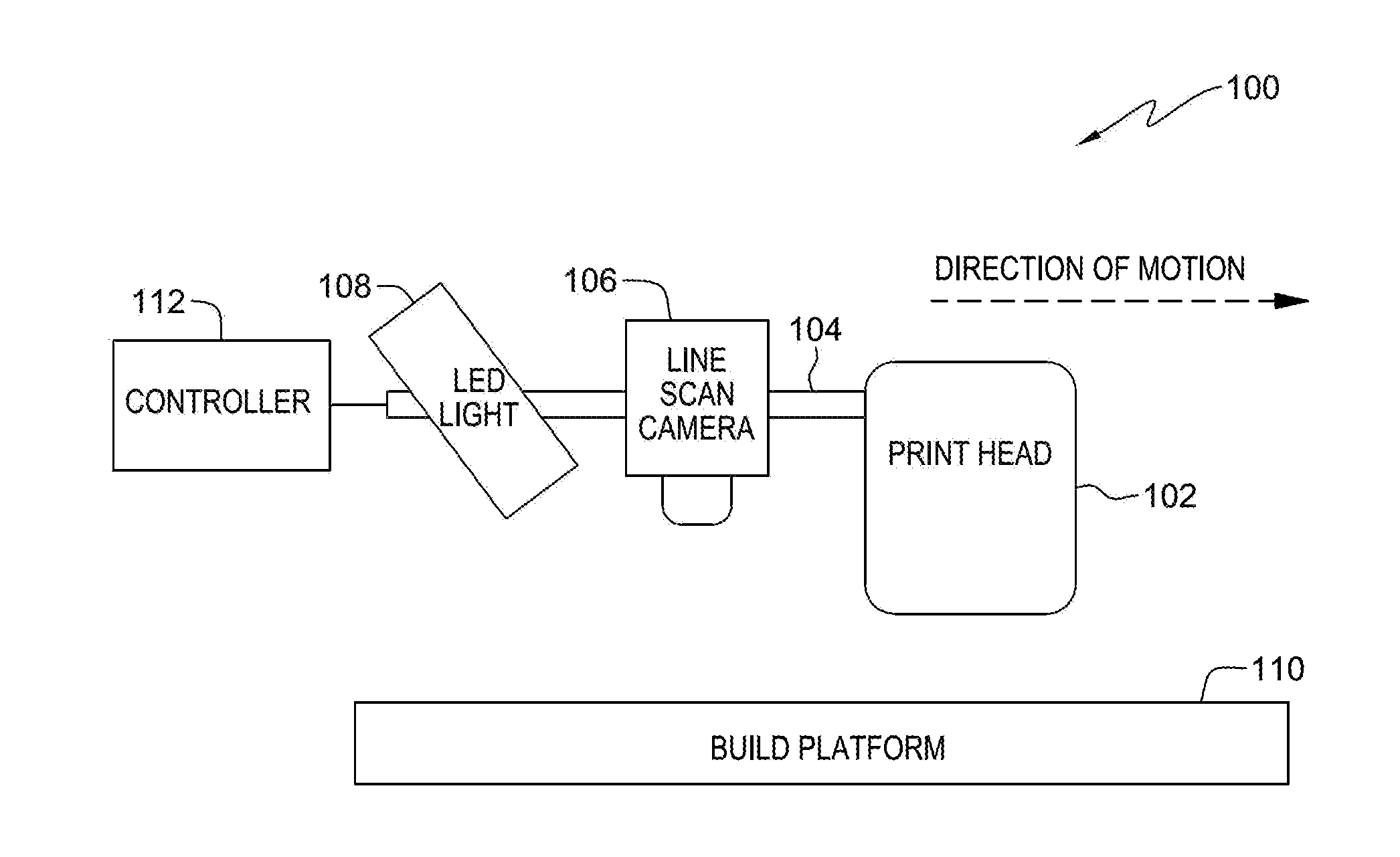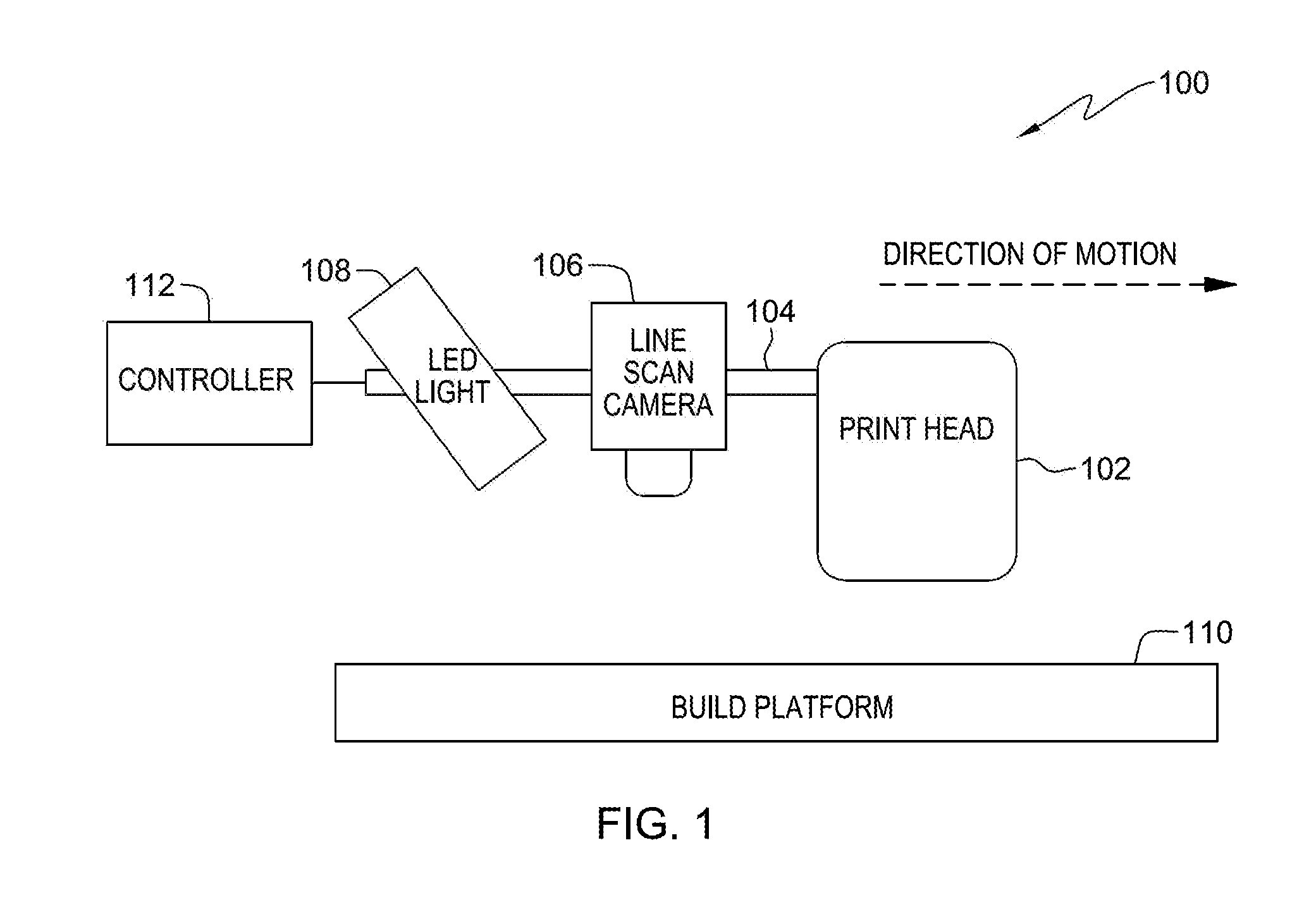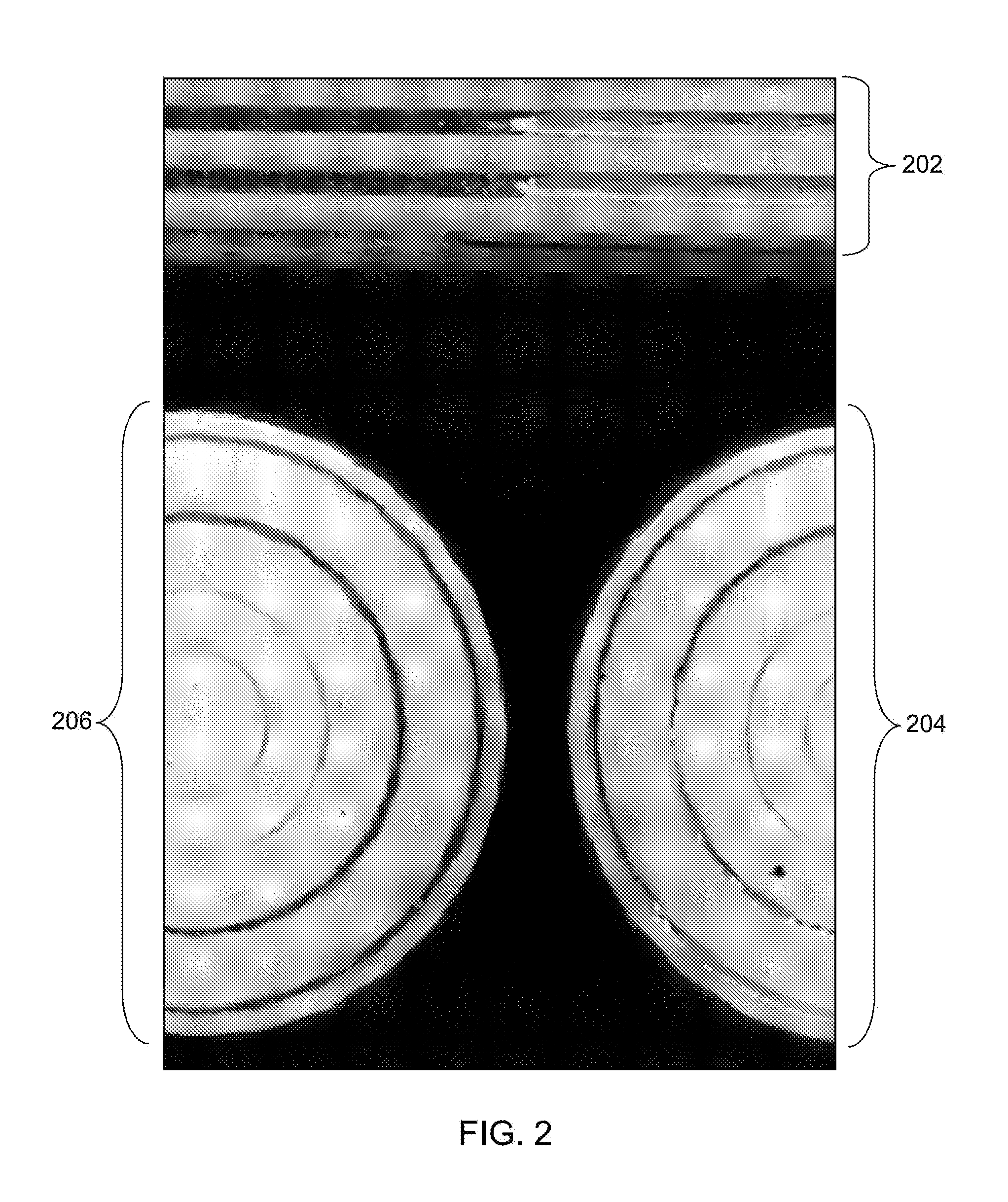Operational performance assessment of additive manufacturing
a technology of performance assessment and additive manufacturing, applied in the direction of manufacturing tools, instruments, image enhancement, etc., can solve the problems of additive manufacturing processing relating to quality assurance, the process of building a structure layer-by-layer is relatively slow, and the build takes several days to compl
- Summary
- Abstract
- Description
- Claims
- Application Information
AI Technical Summary
Benefits of technology
Problems solved by technology
Method used
Image
Examples
Embodiment Construction
[0021]The phrase “additive manufacturing apparatus” is used interchangeably herein with the phrase “printing apparatus” and term “printer”, and the term “print” is used interchangeably herein with the word “build”, referring to the action for building a structure by an additive manufacturing apparatus, regardless of the particular additive manufacturing technology being used to form the structure. As used herein, print and printing refer to the various forms of additive manufacturing and include three-dimensional (3D) printing or 3D rapid prototyping, as well as sintering or melting / fusing technologies. Examples of additive manufacturing or printing techniques include Fused Deposition Modeling, Electron Beam Melting, Laminated Object Manufacturing, Selective Laser Sintering (including Direct Metal Laser Sintering also referred to as Direct Metal Laser Melting, also referred to as Selective Laser Melting), and Stereolithography among others.
[0022]Assurance that a build process is pro...
PUM
| Property | Measurement | Unit |
|---|---|---|
| angle | aaaaa | aaaaa |
| temperatures | aaaaa | aaaaa |
| particle size | aaaaa | aaaaa |
Abstract
Description
Claims
Application Information
 Login to View More
Login to View More - R&D
- Intellectual Property
- Life Sciences
- Materials
- Tech Scout
- Unparalleled Data Quality
- Higher Quality Content
- 60% Fewer Hallucinations
Browse by: Latest US Patents, China's latest patents, Technical Efficacy Thesaurus, Application Domain, Technology Topic, Popular Technical Reports.
© 2025 PatSnap. All rights reserved.Legal|Privacy policy|Modern Slavery Act Transparency Statement|Sitemap|About US| Contact US: help@patsnap.com



